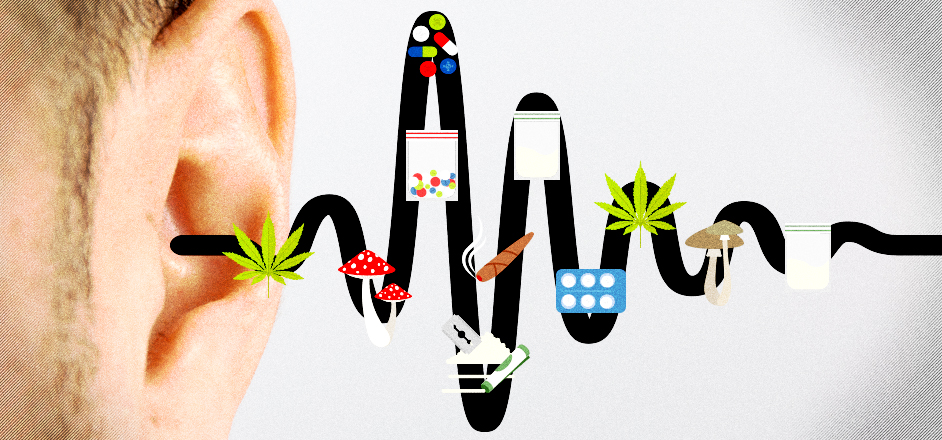Musical artists and drugs are seemingly inseparable partners. Whether it’s Kurt Cobain and his cherished heroin, Lil’ Wayne and his lean (a codeine cough syrup cocktail), or country king Johnny Cash and his enchantment with cocaine — narcotics are both the stimulus and the subject matter of music across all ages and genres. In fact, Rolling Stone estimates that 42 percent of songs hint at or explicitly refer to substance abuse.
However, it seems some types of music mention drugs more than others. Rap in particular once revolved around the subject of drugs, as most of the great hip-hop artists of our generation repeated the same hustlin’ narrative. In the midst of their community’s drug epidemic, major rap artists’ notorious tracks about smoking or selling their own goods translated into a musical culture in which drugs were the centerpiece of conversation.
But a new study about which musical genres make the most drug references indicates that hip-hop now has far from the most dope-riddled lyrics. Quite the opposite, rap has become the least likely genre to mention drugs. The study’s findings indicate that country music makes the most references to getting high, followed by jazz, pop, EDM, rock, folk and finally rap, respectively.
 Source: Addictions.com
Source: Addictions.com
In an attempt to explain this recent large-scale shift in the language of hip-hop, Logan Freedman, a data scientist involved in the study, explains to Newsweek: "I think there was a huge drug culture in the '90s that was blossoming into rap music that simply isn’t as big as it once was.” Freedman also speculates on the modern emergence of drug talk in country tunes. “I think because marijuana has become more normalized in our culture, a lot of country artists are singing about it more often than ever,” he says.
Perhaps country is finally replicating the trends set by reggae, punk, rock, folk, hip-hop, and jazz, which acknowledged their passion to piff long before it became mainstream. Today, cannabis is the favorite substance worth singing about across the board. Among the music analyzed, over 30 percent of all drug mentions referred to the reefer. Cocaine came in second place, followed by acid, pills, meth, heroin, and ecstasy.
 Source: Addictions.com
Source: Addictions.com
Granted, particular intoxicants may be more prevalent in particular categories of music. The study aimed to determine which drugs and genres go hand-in-hand, and found that weed wasn’t always the preferred way to get high. Jazz musicians more often mentioned acid, while folk singers more frequently credit cocaine in their Americana albums.
 Source: Addictions.com
Source: Addictions.com
Rap may still pay homage to weed, cocaine and meth, but it seems not nearly as explicitly as its musical counterparts. Only a decade after its hustling heyday, it seems hip-hop is undertaking a fundamental shift, relaying messages formerly unheard of within the genre. Hip-hop artists like Macklemore have released massive hits touching on once taboo subjects like homosexuality, and artists such as Drake, a former child actor, prove that being from the streets is no longer a prerequisite to rap success.
The definition of who a rapper can be and what stories hip-hop can tell has broadened endlessly in recent years. Contrary to outdated stereotypes, subject matters of substance abuse, sex, and violence no longer dominate the genre. In its stead, country takes the reigns and wrangles in the most drug references of any modern genre, reminding us that this rural music is about more than just blue jeans, pickup trucks, and a hard day on the ranch. It’s also about drugs. Good ol’ fashioned American drugs.



Leave a Reply